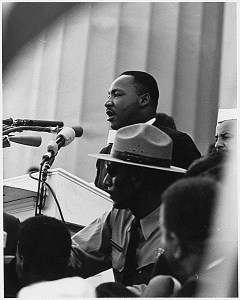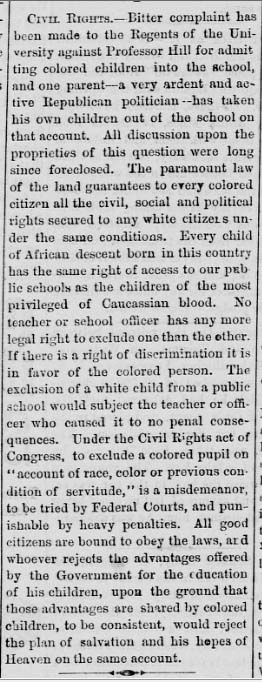From the desk of Rand Simmons
As a boy of 12 living in “whitebread” rural Oregon I was little aware of the significance of Wednesday, August 28, 1963. Today we celebrate the 50th anniversary of this significant moment in history most commonly know as the March on Washington.
 National Public Radio’s Kat Chow wrote: “The summer of 1963 was bursting with drama and would become a pivotal moment of the Civil Rights movement. It was the year that Alabama governor George Wallace tried to block — physically and politically — two black students, James Hood and Vivian Malone Jones, from enrolling in the University of Alabama; the year Medgar Evers was shot and killed in his own driveway; and the same year that brought together more than 200,000 protesters for the March on Washington for better jobs and equal treatment.” Kat is leading a team who are replicating the events of 50 years ago in their @TodayIn1963 Twitter site, http://www.npr.org/blogs/codeswitch/2013/06/12/190680446/-todayin1963-captures-moments-from-a-historic-summer
National Public Radio’s Kat Chow wrote: “The summer of 1963 was bursting with drama and would become a pivotal moment of the Civil Rights movement. It was the year that Alabama governor George Wallace tried to block — physically and politically — two black students, James Hood and Vivian Malone Jones, from enrolling in the University of Alabama; the year Medgar Evers was shot and killed in his own driveway; and the same year that brought together more than 200,000 protesters for the March on Washington for better jobs and equal treatment.” Kat is leading a team who are replicating the events of 50 years ago in their @TodayIn1963 Twitter site, http://www.npr.org/blogs/codeswitch/2013/06/12/190680446/-todayin1963-captures-moments-from-a-historic-summer
Over 50 years ago Martin Luther King stood on the steps of the Lincoln Memorial and gave his “I have a dream speech.” Thirty-six years after the speech ignited the nation, Congress issued as a supplement to a report Commemorating the “I Have a Dream” speech at the Lincoln Memorial : report (to accompany H.R. 2879) (including cost estimate of the Congressional Budget Office). The report is in our federal publications collection in both print and microfiche formats. (Because these will have to be retrieved for your use, please call ahead.)
The story is told from a Pacific Northwest perspective in The Facts the “official voice of the N.W. Black community.” The Facts is one of the many Washington State newspaper titles in our extensive Washington Newspaper Collection. Our issues run from 1962-1979 and are on microfilm. The August 30, 1963 paper (front page) reported:
“Seattle residents of all races joined together Wednesday in a Freedom March from 14th & Pike to the Federal Court House. Like the march on Washington, it was orderly and filled with religious tone.
Local leaders spoke to the crowd gathered on the Court House steps. One by one they spoke from the top of the steps with the background reading UNITED STATES COURT HOUSE.”
Father Lynch; Charles Johnson, Seattle NAACP President; State Representative Sam Smith; and Father Anton are shown in photographs. A short story with the headline, “Mixed Crowd Demonstrates for Equality: Negroes, Whites, Join in effort to Bring End to Discrimination” tells the story of the Washington march. “Packed elbow to elbow around the memorial, they heard their leaders call for Congress to pass laws to end all manner of racial discrimination and enable the unemployed to find dignified work with decent wages.”
The same issue’s editorial ends: “True, life has not been fair, but the statement of the unfairness is merely a shaky crutch upon which to support an empty argument. The Negro standing at a new starting mark in the history of his race will fail himself if he looks behind. He must look ahead to a life struggle in which he can now and at last compete on equal terms.”
The following week, September 6,The Facts carried an editorial, “Rights March Just a Start, Negroes Reminded” and speculated on the effect of the Washington march to speed up civil rights. “The top question in race relations today is whether the successful massive civil rights demonstration will speed establishment of an integrated society in America.”






